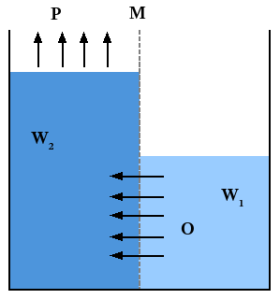September 24th 2014 marks the start of a collaboration between 2x enterprises; Minesto and Atlantis, to complete a sustainable maritime initiative; creating a new tidal turbine. The project received 750,000 EUR in funding from Eurostars; a program that supports research-based small+medium enterprises who develop innovations and services with a total budget of 1.14 billion EUR.
This initiative contributes to the renewable energy sphere by speeding up time-to-market for power plants which in turn, impact global supply of renewable energy. Since the landscape of fossil fuels and crude oil is in an increasingly-difficult state, ocean-based power is beneficial for a variety of factors which would be broken down below.
Firstly, ocean energy equals to 4-18 million ToE (Tonne of Oil Equivalent) and its generation is 80% efficient and predictable without any emissions as well as reduction in requirement of foreign energy imports while protecting coastal areas with barrages and dams. Already the potential is high for this type of energy; however what exactly is ocean energy and how it can be generated? Marine energy/marine power is the energy carried by ocean waves. The energy is produced by wave movement, temperature differences and movement of water which can be converted into electricity capable of powering transport, industries and houses.
Marine power itself splits into wave and tidal power where the former is surface waves while the latter is kinetic energy; wave energy is produced from open coastal areas and tidal turbines are obtained from coastal+estuarine areas. Turbines are also placed in streams of fast-moving rivers; turbines are also placed on strong ocean currents along with thermal energy converters in deep waters.
Marine power, as seen above depends on the current where the strength depends on temperature, wind, depth of the ocean and rotation of earth; the sun is the driving force which controls all the above and causes temperature differences. Solar power creates global temperature differences which results in wind which itself creates waves whose energy potential is greatest between 30-60 degrees latitude.
However, waves are only the first means of generating energy in the ocean as there also exists ocean thermal energy. Water varies from temperature on the surface of water which is affected by direct sunlight and depths where temperature is greater in tropical waters. Fluid is vaporised to drive the turbine and produce electricity and desalinised water. This process is called Ocean Thermal Energy Conversion (OTEC) and it is based on temperature differences between warm shallow or surface water and cooler depth water to run a heat engine which is a base load electricity generation system of 24 hour operation.
The OTEC system operates either in a closed or open cycle where closed cycle engines use working fluids that are refrigerants (mostly Ammonia or R-134a) who have low boiling points. Open-cycle engines use vapor from seawater. OTEC also produces cold water as a by-product which is also used for refrigeration and air conditioning.
Finally, the salinity gradient of the ocean water can also be used in the generation of energy from the ocean via osmotic power. The energy itself is obtained from the difference between salt concentrations in seawater and freshwater. The salinity gradient power generation works by the difference in pressure between sea and freshwater with all generation relying on evaporation to separate water from salt.
Osmotic pressure is the chemical potential of concentrated or diluted solutions of salt. The main process here is the Pressure Retardation Osmosis (PRO) within which PRO seawater is pumped into a pressure chamber where the pressure is lower than the difference between fresh and salt water pressure. Fresh water moves in a semipermeable membrane and increases its volume in the chamber. As the pressure in the chamber is compensated a turbine spins to generate electricity.
However, two more methods have been discovered and still being tested in laboratory settings; Reverse Electrodialisis and Capacitive Method. Reverse Electrodialisis involves creation of a salt battery that operates on alternative exchange of cations and anions. Capacitive method extracts energy from the sea-freshwater mix by cyclically charging electrodes in contact with saline water followed by a discharge in freshwater.
Overall, an ocean is a good source of renewable electrical power where many different methods are operating and more being investigated. Ocean-borne power was around for a long time but nowadays its utilisation and investigation will produce even more benefit as the planet slowly runs out of resources. Therefore, since their is more water on Earth it is only beneficial to consider this alternative energy source.


